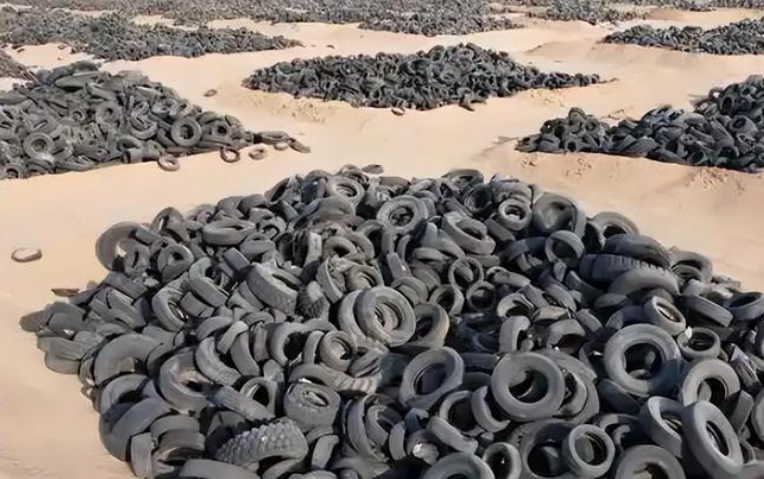February 25, 2025 – Old Tires’ Remarkable Transformation: From ‘Black Pollution’ to ‘Black Gold’
In today’s thriving automotive market, the demand for tires is soaring alongside the prosperity of the automobile industry. However, this boom has brought about a significant challenge: what to do with the millions of worn-out tires?
China, as the world’s largest automotive market, witnesses an annual increase in vehicle exports and a flourishing automotive supply chain. Nevertheless, the disposal of old cars and tires has become a global dilemma. According to AsiaMB’s industry insights, used tires have emerged as a pervasive environmental issue. In 2024, China generated approximately 330 million waste tires, weighing nearly 10 million tons, with an annual growth rate of 8%. Made from non-biodegradable materials containing heavy metals, these tires take nearly a century to decompose naturally, posing long-term pollution risks to land and the environment.

The sources of waste tires are diverse, including private vehicles, commercial vehicles, non-motorized vehicles, and specialty industry machinery. As the number of vehicles increases, so does the frequency of tire replacements, leading to a sharp rise in waste tire volumes.
However, waste tires are not entirely without value. They are gradually being recognized as “black gold” due to their newfound potential. Specialized recycling companies employ specific technologies, such as desulfurization and regeneration processes, to reprocess the rubber from waste tires into recycled rubber for the production of new rubber products. Additionally, pyrolysis technology extracts tire oil, carbon black, steel wire, and combustible gases from waste tires, resources that find widespread applications across multiple sectors.
Currently, global waste tire management is advancing towards intelligence and low-carbon solutions. China aims to achieve a 95% comprehensive utilization rate through pyrolysis by 2030, alleviating resource shortages and promoting the development of related industries. What was once considered “black waste” has now become a sought-after commodity in the market, contributing significantly to the path of sustainable development worldwide.














